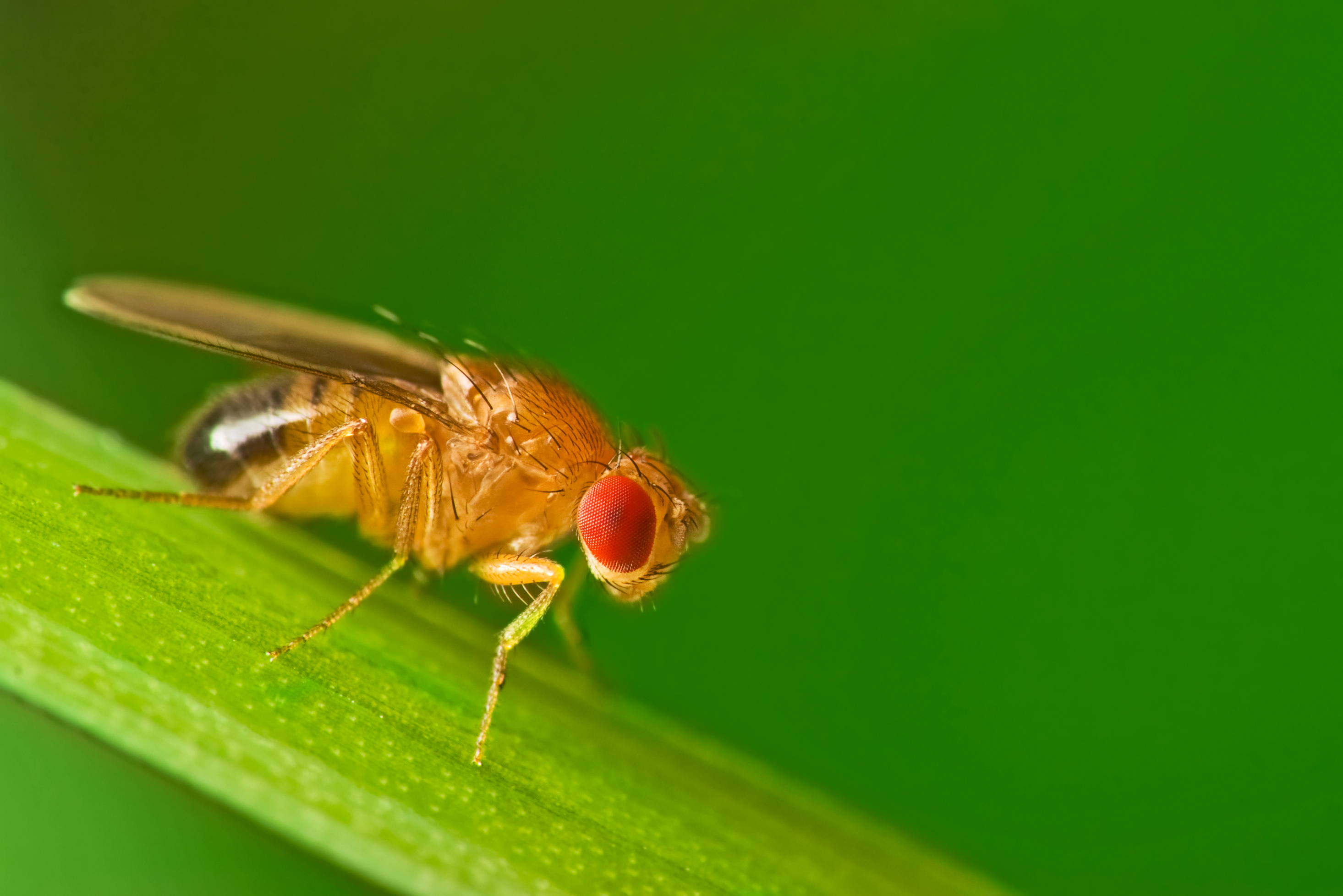

Author: Caroline Seydel
Anyone who has spent time around toddlers has likely heard the phrase “I wish I had that energy!” from an exhausted adult. Toddlers need all that energy, of course, because they are growing and developing much faster than adults are. Over the course of a lifetime, the body’s energy needs ebb and flow. Accordingly, the cells of the body convert nutrients to energy at different paces during various stages of development.
Now, a new study in fruit flies provides a first glimpse at the sophisticated genetic programming that choreographs those changes in energy metabolism. The study, conducted by researchers at University of Utah Health, was published March 12 in the journal Genes & Development. They found that in the fruit fly Drosophila, a gene called dERR coordinates a slew of genes that turn on and off simultaneously all over the body as the fly goes through its lifecycle. These highly synchronized changes in gene activation allow the organism to tailor its metabolism to meet its energy needs during periods of rapid growth and maturation.
“There’s many different tissues in there and they’re all doing different things,” says Carl Thummel, Ph.D., senior author of the paper, a professor of human genetics at U of U Health. “That’s why we were so surprised to see how coordinated everything was.”
All cells need energy. Whether those cells reside in a human or a fly, the chemical reactions that convert food to energy proceed in much the same way. Studying energy metabolism in the fruit fly, therefore, can reflect a version of what’s going on in people.
Thummel and his colleagues wanted to know more about the gene dERR, which makes a protein called Drosophila Estrogen-Rrelated Rreceptor. Humans have three different versions of the ERR protein, but fruit flies just have the one. From their previous work, the researchers knew that dERR supports rapid growth in young flies. But they also noticed that adult flies make dERR as well.
“Why would a protein that’s supporting rapid growth be expressed in the adult stage, when there’s no net growth in the adult organism?” says Katherine Beebe, Ph.D., the study’s lead author, a postdoctoral fellow at U of U Health. To find out, she created mutant flies in which she could stop the cells from making dERR at any time she chose during development.
“We have finely tuned control over when a gene is lost and in what tissues it’s lost,” Beebe explains. This is important, because juvenile flies that lack dERR cannot survive to adulthood.
When she eliminated dERR from adult flies, sugar built up in the flies’ system - a condition called hyperglycemia. At the same time, their levels of fat plummeted. The flies had lost the ability to burn the sugar for energy, and simultaneously stopped making fat for energy storage. “It was really exciting to connect those two dots,” Beebe says. That suggested that dERR was controlling an extensive set of genes involved in multiple chemical processes.
To find out exactly how wide-ranging dERR’s influence was, the researchers looked at gene expression patterns over time for dozens of genes involved in metabolism. They found that the majority of these genes switch on simultaneously during the pupal stage of development. A pupa is a bit like a “teenage” insect, no longer a larva, but not yet an adult. Many genes encode proteins that break down glucose for energy, and every one of them turned out to be controlled by dERR, plus some of the genes involved in storing energy as fat. “All those genes go up dramatically at the onset of adulthood, and part of that switch fails in the ERR mutants,” Thummel says.
Still, a huge number of genes participate in metabolism, and some continued to switch on and off as usual, even without dERR. “Science is incremental,” says Beebe, and dERR is likely only one of many control switches that remain to be identified.
Although much work remains to be done, understanding the hierarchy of genes that regulate metabolism could reveal new ideas for addressing human disease. It could lead to new insights into shutting down cancer cells, which exist in a constant state of rapid growth, or for correcting metabolic disorders.
The researchers set out to test what happened to flies that lack dERR, and in the process pulled a thread that led to something they never expected. “It uncovered something much bigger that we think is significant,” says Thummel, “that metabolism is globally regulated during development, in ways we’d not really thought of before.”
# # #
In addition to Thummel and Beebe, co-authors are M. Robins, E. Hernandez, G. Lam and M. Horner. “Drosophila estrogen-related receptor directs a transcriptional switch that supports adult glycolysis and lipogenesis” was published with support from the National Institutes of Health.